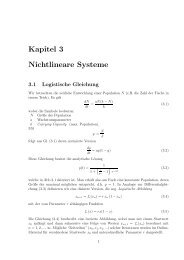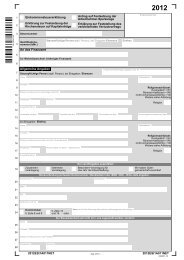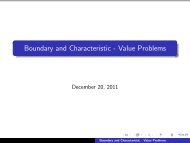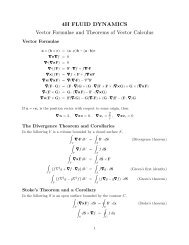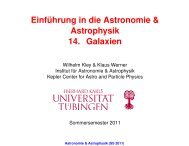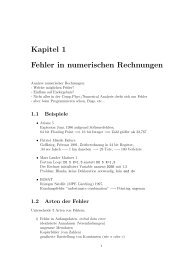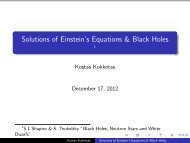Dynamics of Relativistic Particles and EM Fields
Dynamics of Relativistic Particles and EM Fields
Dynamics of Relativistic Particles and EM Fields
You also want an ePaper? Increase the reach of your titles
YUMPU automatically turns print PDFs into web optimized ePapers that Google loves.
The canonical momentum ⃗ P conjugate to the position coordinate ⃗x is<br />
obtained by the definition<br />
Thus the conjugate momentum is<br />
P i ≡ ∂L<br />
∂u i<br />
= γmu i + e c A i (13)<br />
⃗P = ⃗p + e c ⃗ A (14)<br />
where ⃗p = γm⃗u is the ordinary kinetic momentum.<br />
The Hamiltonian H is a function <strong>of</strong> the coordinate ⃗x <strong>and</strong> its conjugate<br />
momentum ⃗ P <strong>and</strong> is a constant <strong>of</strong> motion if the Lagrangian is not an<br />
explicit function <strong>of</strong> time, in terms <strong>of</strong> the Lagrangian is :<br />
H = ⃗ P · ⃗u − L (15)<br />
by eliminating ⃗u in favor <strong>of</strong> ⃗ P <strong>and</strong> ⃗x we find (HOW?) that<br />
cP ⃗u =<br />
⃗ − eA<br />
√ ⃗ (⃗P )<br />
(16)<br />
−<br />
e ⃗ 2<br />
A<br />
c + m2 c 2<br />
<strong>Dynamics</strong> <strong>of</strong> <strong>Relativistic</strong> <strong>Particles</strong> <strong>and</strong> <strong>EM</strong> <strong>Fields</strong>




